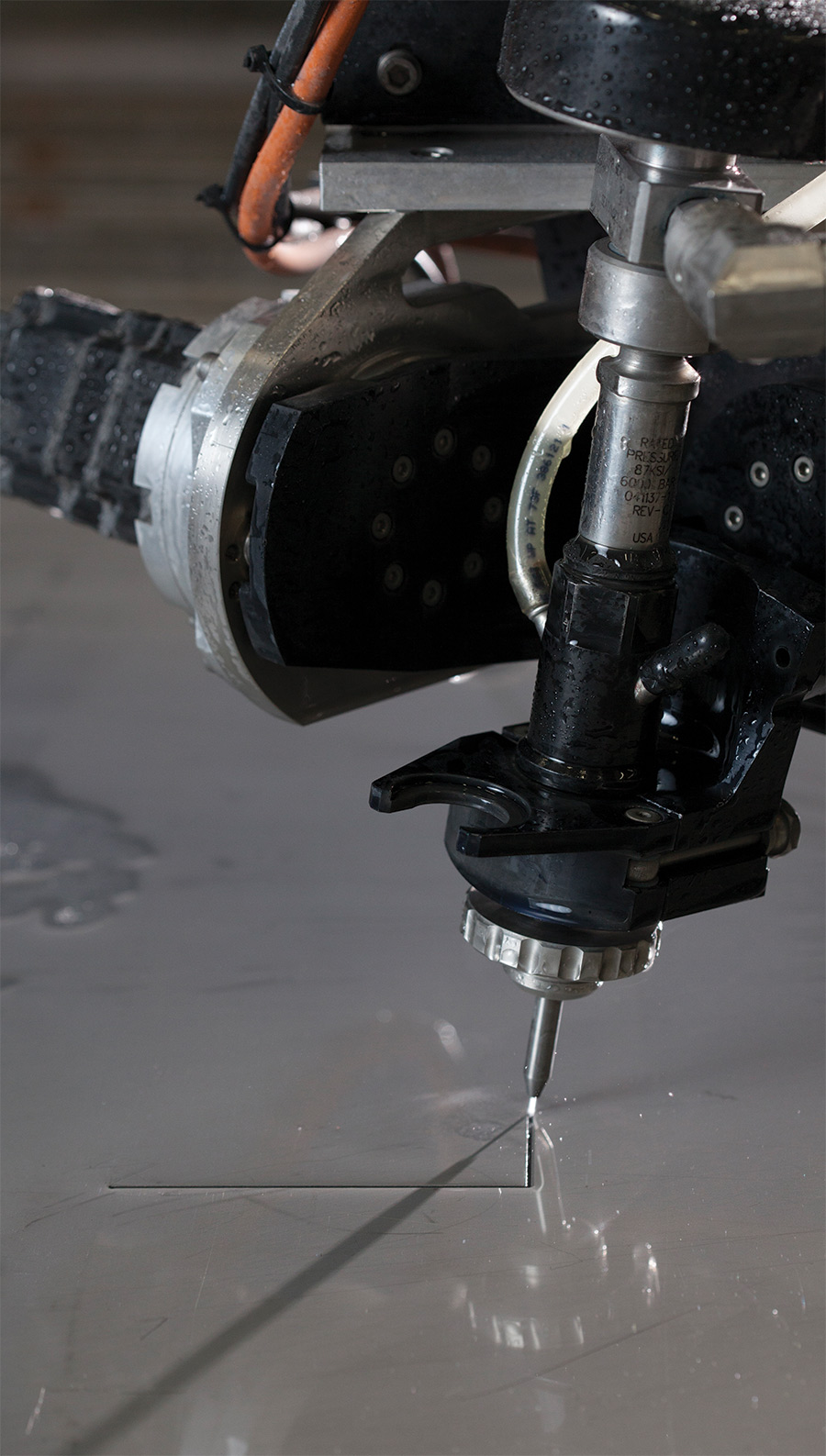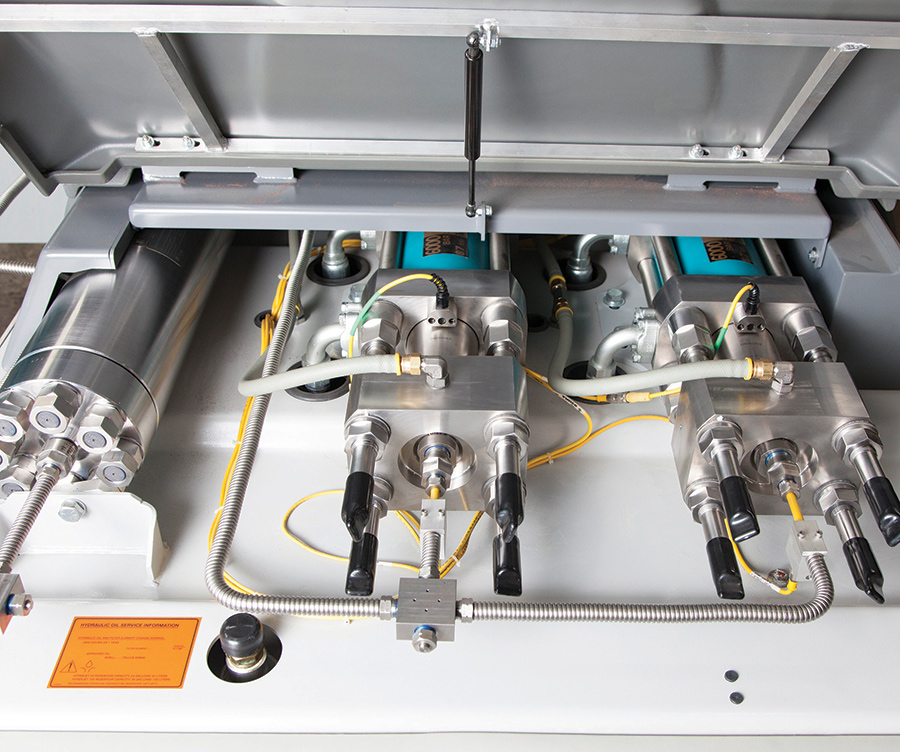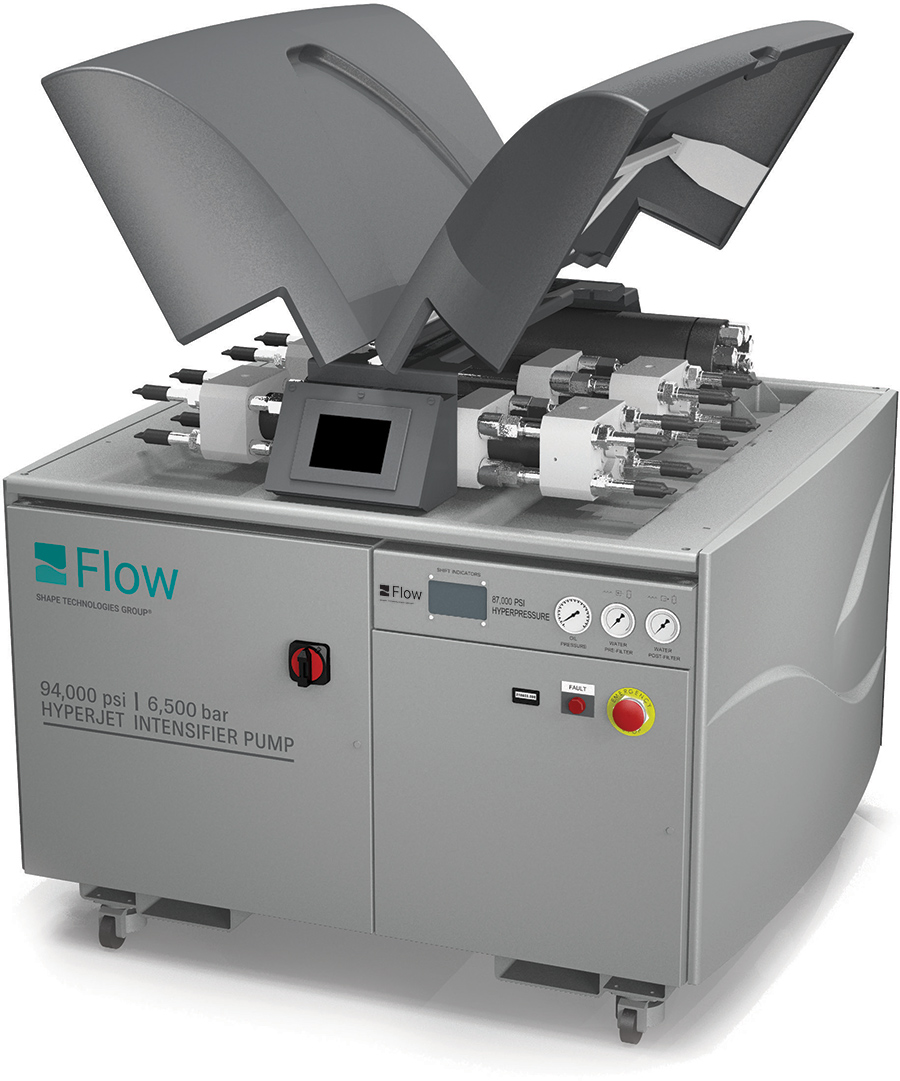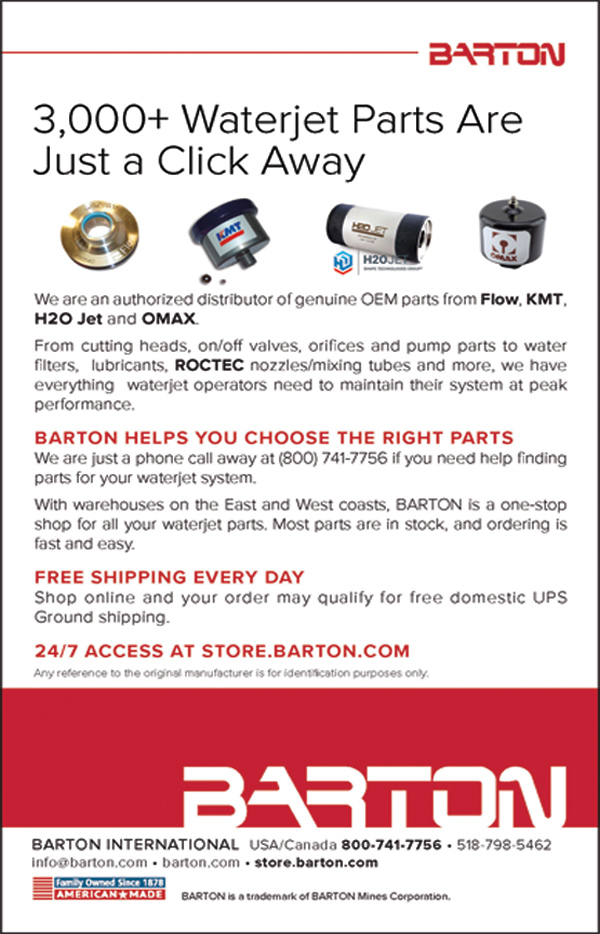
ressure equals productivity. When abrasive waterjet cutting, the higher the water pressure, the more productive the machining operation is, according to Tim Fabian, vice president of marketing and product management at Flow Waterjet.
Although some machine tool builders still offer 40,000-psi waterjets, Fabian says ultra-high pressure generally starts at 55,000 to 60,000 psi, the range of most waterjet pumps. With Flow’s envelope-pushing HyperPressure technology, ultra-high pressure waterjetting extends well past 75,000 psi.
Close to half of the company’s customers now choose HyperPressure systems, he says. “There is a continual increase in the adoption of those pumps. Every year that pump is out, our product mix shifts more toward HyperPressure.”

As a result of the increased cutting speed and reduction in abrasive consumption, the cost per part generally decreases by about 30 percent, according to Fabian.
“When a company is quoting a job, the first thing they are looking at is their part cost in order to determine what their quote [should be],” he says. “That’s why companies with HyperPressure tend to win more jobs.”
Another reduction that occurs when using a 94,000-psi pump is to kerf taper, which makes the top of the cut wider than the bottom—a V-shape. However, the highly dense and coherent stream doesn’t completely eliminate taper, Fabian says. To achieve that, a cutting operation will be advised to use Flow’s Dynamic Waterjet or Dynamic XD. Those products automatically angle the head to one side so that all the taper goes to the scrap side of the material and slightly tilts the head forward to compensate for stream lag, where the exit point of the stream at the bottom of the material trails behind the entrance point of the stream at the top of the material.

Most HyperPressure waterjet customers are cutting parts where thickness measures 6 in. or less, but Flow has clients that have cut parts up to 24 in. thick, Fabian says. “It’s just a matter of how long you’re willing to wait for the part to be cut.”
In general, the harder the workpiece material, such as heat-resistant superalloys and other difficult-to-cut exotic metals, the more benefits HyperPressure provides, he says. “But anything from aluminum and harder, there is significant benefit,” he adds, noting that customers have seen cutting speed increases of 30 percent when cutting aluminum and mild steel.
Pumping water at 94,000 psi isn’t the upper limit when abrasive waterjetting. “We’ve run pump pressures even well above 100,000 psi,” Fabian says.
 We continually evolve our seal technology, as well as metallurgical processes, to enhance the life and reliability of the product.
We continually evolve our seal technology, as well as metallurgical processes, to enhance the life and reliability of the product. 
Even outside the system, physics plays a role that must be taken into account. “If you look at the freezing point of water, for example, it goes up considerably under pressure,” Fabian says. “If you are running a 160,000-psi pump, your water might freeze at room temperature.”
Nonetheless, similar to competing technologies like lasers increasing in wattage and plasmas going up in amperage, builders of waterjet cutting machines are under pressure to keep their customers competitive, Fabian says.
“More pressure will always equal more productivity,” he adds. “As with anything, anytime you achieve one incremental step, the next one becomes a degree more difficult.”
